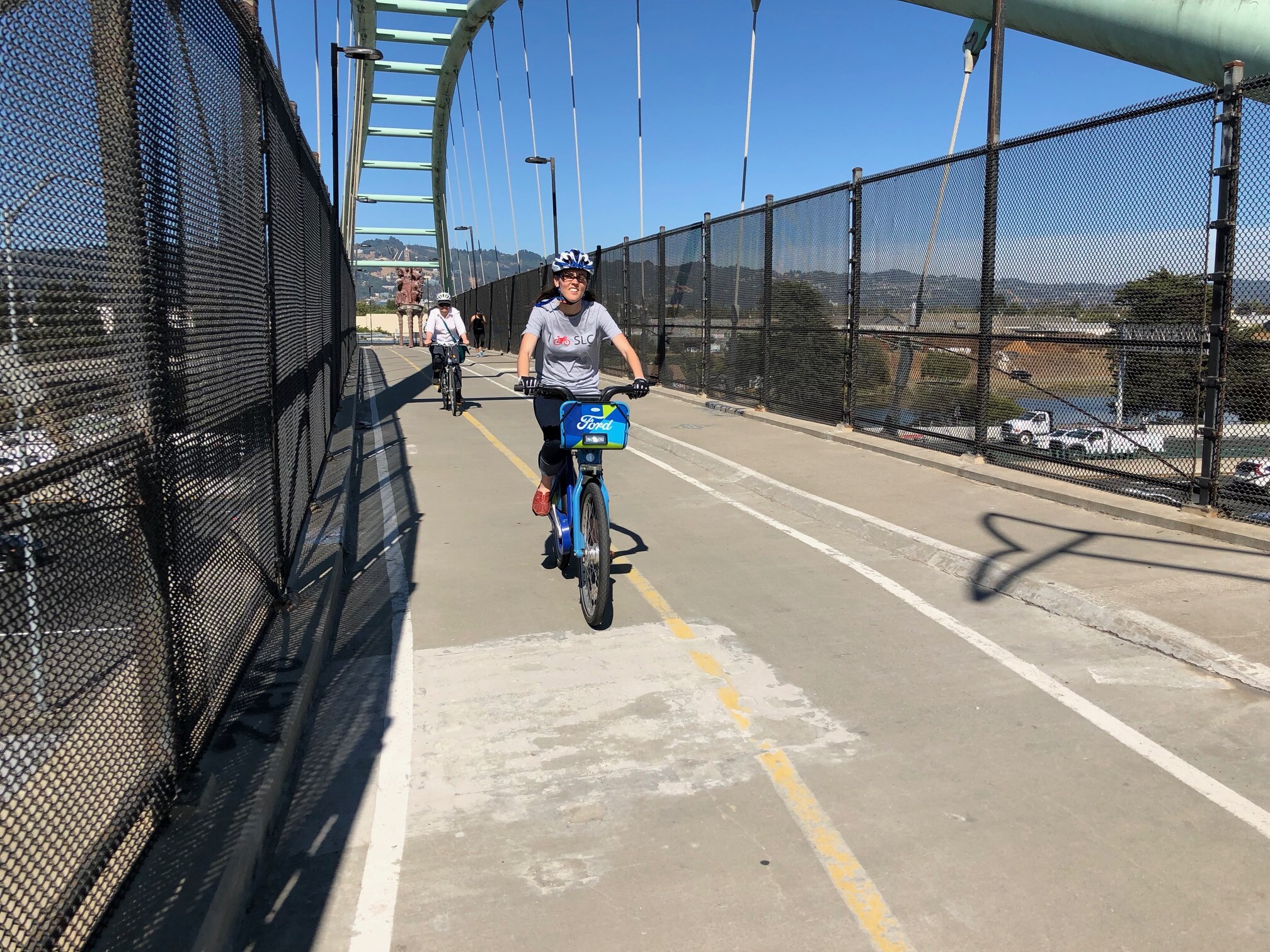It’s quite technical but the Federal Highway Administration (FHWA) has released what it considers a comprehensive guide for transportation officials to measure trade-offs and determine what type of bikeway to build and where. The Bikeway Selection Guide shows, for instance, how to consider auto traffic volume and speed and number of lanes. It discusses all the possibilities from narrowing and removing auto lanes to the preferred shoulder width on rural roads (10 ft.).
Among the many generalities: It’s usually better to include a bike lane even next to parking, despite the possibility of dooring, which accounts for 5-10 percent of bicycle accidents. And generally, one-way bike lanes are better on two–way streets than two-way bike lanes on one side.
It is also worthwhile to provide protection at intersections and continue bike lanes through them. “Intersection approaches with mixing zones require motorists to yield to bicyclists before entering or crossing the bike lane. This clarity can be further enhanced with bicycle lane extensions through the intersections, green colored pavement, and regulatory signs. Research shows protected intersections have fewer conflicts and are therefore preferable, the guide says.
The manual discusses the many factors that should go into deciding whether to separate autos from bikes. If they can’t do so, planners can consider other measures, such as reduced speed limits.
Bicyclists do tend to feel more comfortable on separated lanes.
View the Bikeway Selection Guide at: https://safety.fhwa.dot.gov/ped_bike/tools_solve/docs/fhwasa18077.pdf









While this is an improvement – I find it troublesome that the guide is willing to sacrifice safety for convenience. To upgrade our roadways, and provide safe space to all users is going to cost money, it is going to create changes that will be hard to sell to the general public, and planners and engineers will need the cover of a Federal guideline that states clearly and without hesitation that such a design fails to meet safety. By giving entities the “out” of downgrading a facility to avoid the costs, or the public backlash, it sets the entire effort to fail – and the cost will be a substantial number of maimed or dead people.
“At locations where the preferred bikeway cannot be provided on
the primary route and it is the bikeway
and the design user, and at locations where a parallel route
is not feasible or is not provided, that
bicycle activity may be suppressed, and
operating on this roadway segment may be .”
Another point that I like to bring up, is that “Shared Pathway” is a fancy way of saying a wide sidewalk. As a pedestrian I love a wide sidewalk. it is inviting, it is comfy, and I will hate every bike that overtakes me. We all should be troubled by a manual that accepts transferring conflict zones from the car realm into the pedestrian realm. Sidewalks are not, and should never be considered bicycle infrastructure. Accepting such is a cop-out, is allowing lazy design in order to cut costs or prevent the hard work of reducing car space by shifting the burden to other users.
Lastly, this document conveniently skips the first and perhaps most important Dutch principle of safety design, , and it reads as follows:
Controlling speed is more than just posting a sign, or parking a police officer on every corner. The design of the road should “SELF-ENFORCE” the speed of the user. otherwise it lacks controls.
There is a “MAXIMUM” speed for every type of road conflict.
) If bikes and pedestrians are expected to share the road because there are no sidewalks or visibility is compromised; the maximum speed should be no more than 6 mph because cars will need to make sudden stops. Perhaps there are no examples in the US other than parking lots, while most of Utah’s residential streets should be thought as this type of facility because of the lack of sidewalks.
) Where pedestrians have a sidewalk but might cross the road anywhere, and bikes are allowed to share the road with cars the target speed is 20 mph because at higher speeds the chance to survive a crash drops drastically. Any road design that provide multiple lanes on each direction and/or higher speeds than 25 mph limits require protected bike lanes separated from car traffic. Not for convenience, but because at those speeds the chance of surviving a crash drops dramatically.
) Where pedestrians are expected to cross at designated crosswalks, the target speed is 25mph because studies suggest that at higher speeds drivers are reluctant to yield to pedestrians. (Even with those famous Utah orange flags)
) Where traffic is expected to intersect at a 90 degree angle speeds should not exceed 30 mph because the capacity of the car frame to absorb side collisions.
) Any roadway with more than 40 mph speeds has to be physically separated by direction to prevent head on collisions. and pedestrian and bicycle facilities need to be separated and protected from the “Safe Zone”
The omission of the Dutch first principle is troubling, it ignores the basic premise of safety, and allows the document to forgo safety design elements as it goes on.
Comments are closed.